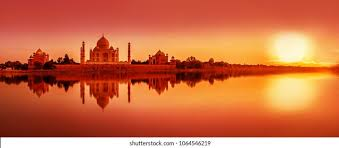History of India
he history of India is a vast and complex subject that spans thousands of years. From ancient civilizations and empires to colonial rule and independence, India's history is rich and diverse. In this essay, we will explore the major periods and events that have shaped the nation, highlighting key developments and influential figures along the way.
Indus Valley Civilization (c. 3300 BCE - 1300 BCE)
The earliest known civilization in the Indian subcontinent is the Indus Valley Civilization. Flourishing around the same time as ancient Egypt and Mesopotamia, this advanced urban culture developed along the Indus River in present-day Pakistan and northwest India. The cities of Mohenjo-Daro and Harappa are notable examples of their well-planned settlements. The civilization had sophisticated infrastructure, including drainage systems and well-organized city layouts. The script of the civilization is yet to be fully deciphered, leaving much of their written history unknown.
Vedic Period (c. 1500 BCE - 500 BCE)
The Vedic period marked the arrival of the Indo-Aryans in the Indian subcontinent. The Indo-Aryans brought with them the sacred texts known as the Vedas, which became the foundation of Hinduism. Society during this period was divided into four varnas or social classes: Brahmins (priests and scholars), Kshatriyas (warriors and rulers), Vaishyas (merchants and farmers), and Shudras (laborers). The Vedic period also saw the rise of Janapadas, small kingdoms that fought for power and resources.
Maurya Empire (322 BCE - 185 BCE)
Under the reign of Chandragupta Maurya, the Maurya Empire emerged as the first major empire in ancient India. Chandragupta's grandson, Ashoka the Great, is particularly renowned for his conversion to Buddhism and the spread of the religion across the empire. Ashoka's reign is often considered a golden age, marked by the spread of Buddhism, the establishment of a well-organized administration, and the construction of monumental pillars and edicts.
Gupta Empire (c. 320 CE - 550 CE)
The Gupta Empire is often referred to as India's "Golden Age." Under the leadership of Chandragupta I and his successors, the Gupta dynasty brought about a period of great prosperity and cultural advancement. The Gupta Empire witnessed significant achievements in science, mathematics, astronomy, literature, and art. Scholars such as Aryabhata and Kalidasa thrived during this era, contributing immensely to their respective fields.
Islamic Invasions and the Delhi Sultanate (1206 CE - 1526 CE)
In the early 13th century, Muslim invasions began with the arrival of Muhammad of Ghor. These invasions eventually led to the establishment of the Delhi Sultanate, which lasted for several centuries. The Delhi Sultanate was marked by a series of dynasties, including the Slave Dynasty, the Khilji Dynasty, the Tughlaq Dynasty, and the Lodi Dynasty. During this period, Islam spread across the subcontinent, and significant architectural marvels, such as the Qutub Minar and the Alai Darwaza, were constructed.
Mughal Empire (1526 CE - 1857 CE)
One of the most iconic and influential periods in Indian history is the Mughal Empire. Founded by Babur, the Mughal Empire reached its zenith under Emperor Akbar, who implemented policies promoting religious tolerance and cultural assimilation. The empire witnessed the construction of magnificent structures like the Taj Mahal and the Red Fort. However, the later Mughal rulers faced challenges from regional kingdoms, such as the Marathas and the Sikhs, which weakened the empire.
British Colonial Rule (1757 CE - 1947 CE)
The British East India Company established its presence in India in the 17th century, gradually gaining control over various regions. The Battle of Plassey in 1757 marked a significant turning point, allowing the British to extend their control over Bengal. With the decline of the Mughal Empire, the British gradually expanded their dominion, establishing the British Raj in 1858 after the Indian Rebellion of 1857. British colonial rule had profound socio-economic and political impacts on India, leading to movements for independence and nationalistic sentiments.
Indian Independence Movement (1885 CE - 1947 CE)
The Indian independence movement was a long and arduous struggle against British rule. The Indian National Congress, founded in 1885, played a central role in mobilizing Indians and demanding self-rule. Prominent leaders such as Mohandas Gandhi, Jawaharlal Nehru, and Subhas Chandra Bose emerged during this period. Nonviolent resistance, civil disobedience, and mass protests became the hallmark of the movement, culminating in India's independence on August 15, 1947.
Partition of India and Independence (1947 CE)
The partition of India in 1947 led to the creation of two separate nations: India and Pakistan. The division was based on religious lines, with Pakistan being established as a separate homeland for Muslims. The partition resulted in massive communal violence and the displacement of millions of people. Mahatma Gandhi, who advocated for religious harmony, was assassinated in 1948, deepening the wounds of partition.
Post-Independence India (1947 CE - Present)
Following independence, India adopted a democratic system of government with a constitution that enshrined secularism and fundamental rights. Jawaharlal Nehru became India's first Prime Minister, leading the nation through its early years. The country faced numerous challenges, including economic development, social inequality, and regional conflicts. India engaged in wars with Pakistan in 1965 and 1971, leading to the creation of Bangladesh. India also conducted nuclear tests in 1974 and 1998, asserting its position as a nuclear power.
In recent decades, India has experienced rapid economic growth, technological advancements, and socio-political changes. The country has become a major player in the global economy and has made significant progress in sectors such as information technology, space exploration, and pharmaceuticals. However, India also grapples with challenges such as poverty, corruption, religious tensions, and regional disparities.
In conclusion, India's history is a tapestry of diverse civilizations, empires, and struggles. From the ancient Indus Valley Civilization to the modern-day democratic nation, India's journey has been shaped by a multitude of factors and personalities. Understanding this history is essential for comprehending the country's present-day complexities and appreciating its cultural and historical heritage.


Comments
Post a Comment